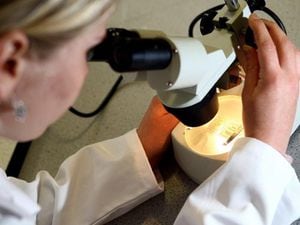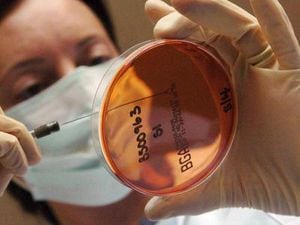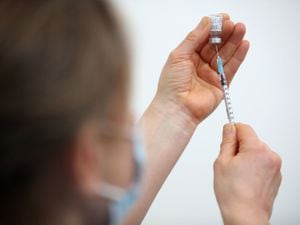Changes to vital cervical screening spark fears over risks for women
Moving cervical tests to every five years for some is based on science, say experts.

It’s simple test that takes just five minutes and saves thousands of lives every year.
Cervical screening, also known as a smear test, is a way of preventing cancer.
It checks for the high risk human papilloma virus (HPV), which can cause cervical cells to become abnormal. About 3,000 cases of cervical cancer are diagnosed each year in the UK and most cases are linked to high risk HPV.
In England, all eligible people registered with a GP aged 25 to 49 currently receive invitations to attend a screening every three years, with those aged 50 to 64 receiving invitations every five years.
But in Wales, it has recently been announced that people between 25 and 64 would all now be invited to cervical screening every five years. It is a move that has also been adopted in Scotland and many believe England may also soon follow.
But a petition set up to raise concerns about the new five-year interval between screening has attracted more than a million signatures from all parts of the UK. While standing by its decision, Public Health Wales recognises the public’s concerns and last week apologised for causing “concern” by not explaining the move well enough.
The extension from three to five years between screening has been recommended by The UK National Screening Committee because the test used in cervical screening has changed and can identify those at greater risk of cancer earlier
The previous cervical screening test aimed to detect unusual changes in the cervix.
The new test involves the same procedure of taking a sample from the cervix but tests for HPV first – known as ‘HPV primary testing’. As having HPV infection comes before abnormal cells developing, HPV primary testing detects women at risk of developing cervical cancer at an earlier point.
Officials say evidence shows it is safe for those who test negative for high risk HPV to be screened less often.
Anyone who does test positive for high risk HPV but has no cervical changes will be invited back in one year.

If someone has both HPV and cervical cell changes, they will be invited for a further check at colposcopy.
Wales and Scotland have been the first to implement the new intervals, with England expected to follow suit, according to Cancer Research UK. Northern Ireland has not yet moved to HPV primary testing.
Alice Davies, Cancer Research UK’s health information manager, said: “We want to reassure people that the recent changes to the cervical screening programme in Wales were made based on years of research into making cervical screening more effective.
“Extending the gap for routine screenings from three years to five years has been recommended by the UK National Screening Committee because the cervical screening test has changed.
“We anticipate this change will be introduced in other parts of the UK in due course.”
Cervical screening samples are now tested for the human papilloma virus (HPV). HPV can cause abnormal cells, which if left untreated over a long time can develop into cancer.
As HPV causes virtually all cases of cervical cancer, this new way of testing samples detects more women at risk of developing cervical cancer. Ms Davies added: “As the new test is more accurate at finding those at risk of cervical cancer, screening intervals can be safely extended from three to five years.
“If someone is HPV positive then their next screening interval will be shorter than five years. The new test allows women to be invited back for screening based on their risk of developing cervical cancer, rather than just their age.
“Overall this makes the programme more accurate, and means people don’t have extra rounds of screening that wouldn’t give them any benefit, while offering more screening to people at higher risk.”
NHS England officials said changes to the cervical screening programme in England would be subject to assurance that they could be made safely and effectively and would require ministerial sign off.
Information
They added that it was important that any change would involve clear public information to make people
A spokesman stated that NHS Digital is working with NHS England and NHS Improvement at pace to prepare for the safe and smooth transition to a new IT system for cervical screening which would safely and effectively support any changes to the programme.
More than 4.5million people are invited for cervical screening each year.
It’s estimated that cervical screening can save at least 2,000 lives every year.
Last month the national charity Jo’s Cervical Cancer Trust raised concerns over NHS England data which showed that around 70 per cent of eligible people in England were tested in 2020-21 and coverage had dropped by two per cent compared to 2019-20. The screening programme was temporarily suspended during the Covid-19 pandemic.
In Wolverhampton, 66 per cent of those eligible were screened, down from 69 per cent, with an estimated 24,923 women in the area missing a test.
In Walsall, 71 per cent were screened, down from 73 per cent, with an estimated 21,393 women missing a test and in Sandwell, 66 per cent were screened, down from 69 per cent, with an estimated 31,665 women missing a test.
In Dudley, 72 per cent were screened, down from 74 per cent, with an estimated 22,567 women in the area missing a test.
In the county of Staffordshire, 74 per cent were screened, down from 76 per cent, with an estimated 56,465 women in the area missing a test. In Shropshire, 76 per cent were screened – down from 78 per cent the year before. In Telford and Wrekin, 72 per cent were screened – down from 74 per cent the previous year.
This week is Cervical Cancer Prevention Week 2022 and Jo’s Cervical Cancer Trust is raising awareness of cervical screening, and potential results, and encouraging women and people with a cervix not to ignore their invitation.
Chief executive Samantha Dixon, says: “We want everyone to have the support and facts they need to access cervical screening and deal with an unexpected result.
“Cervical screening can help stop cervical cancer before it starts so it’s an incredibly important test.”
You can share your views by emailing editorial.support@mna media.co.uk
Don’t be frightened of going for test that saved my life

Justine Harris believes screening gave her a second chance after a routine smear test detected abnormal cells in March 2017.
Her world was turned upside down when doctors confirmed it was cancer and she would need to have a radical hysterectomy.
She was able to keep her ovaries to prevent her going through an early menopause and three weeks after surgery Justine, who was 29 at the time, was told she was clear of cancer.
For mother of three Justine, the most difficult thing was having to tell her children as they were too young to understand why she wasn’t at home and able to do normal things for a while. But with the support of her family you she got through this very difficult time and since then the now 33-year-old, from Walsall, has been doing her bit to help others facing the disease.
“If I hadn’t gone for my smear, I would never have known I had cervical cancer. It was picked up because of the smear. If I had waited longer, it would have gotten worse,” says Justine, who works as an aesthetic therapist.
“It’s really not as bad as might seem and it only takes two minutes if that.
“I think it’s better to have a small procedure, than leave it and ending up having a bigger procedure like a hysterectomy.”
Cancer Research UK explains what to expect from a cervical screening appointment
Who is cervical screening for?
Cervical screening is for everyone with a cervix, regardless of sexual or gender identity. This includes women, some transgender men and some non-binary people. In the UK it’s offered to those aged 25 to 64
What happens?
It’s usually done by a practice nurse at a doctor’s surgery. After a chat to talk through the test and answer any questions, the nurse will ask the patient to lie on their back with their knees raised and parted. They then use a speculum, which opens the vagina, to be able to see the cervix.
A small, soft brush is used to collect some cells. The doctor or nurse will then remove the speculum and let the patient know the test is done.
The cells that have been collected are sent off to a lab. They’ll be tested for high risk HPV and, if it’s found, they will be checked for any abnormal changes.
What if someone feels embarrassed?
"It’s normal to feel self-conscious. “When women are invited for routine cervical screening, they may feel a little anxious,” says Mary Hoey, one of the charity’s senior nurses.
“It can be reassuring for women to know that most of these tests are done by practice nurses, who are very experienced.”
When booking the appointment, you can ask for a man or woman to do the test. You can also ask to take someone with you to the appointment.
Does it hurt?
Most people won’t experience pain from cervical screening, but sometimes the speculum can be uncomfortable. Speak with your doctor or nurse if you have concerns about this.
Does it take long?
Most cervical screening appointments are quicker than a normal doctor’s appointment.
Some practices offer cervical screening at weekends or outside normal working hours too.
After the test your results will be posted to your home address.
What happens if I get an abnormal result?
The vast majority of cervical screening results are normal.
If the test finds high-risk HPV but no abnormal cells, you will be invited back early for screening in a year’s time.
If the test finds high-risk HPV and abnormal changes in the cells, you will be invited to go for a different type of test called a colposcopy.
A colposcopy helps to show how different the changed cells are from the norm, so doctors can suggest the best options for managing them.
Finding abnormal cells doesn’t mean you have cancer. In fact, finding these cells and treating them can prevent cervical cancer developing.





